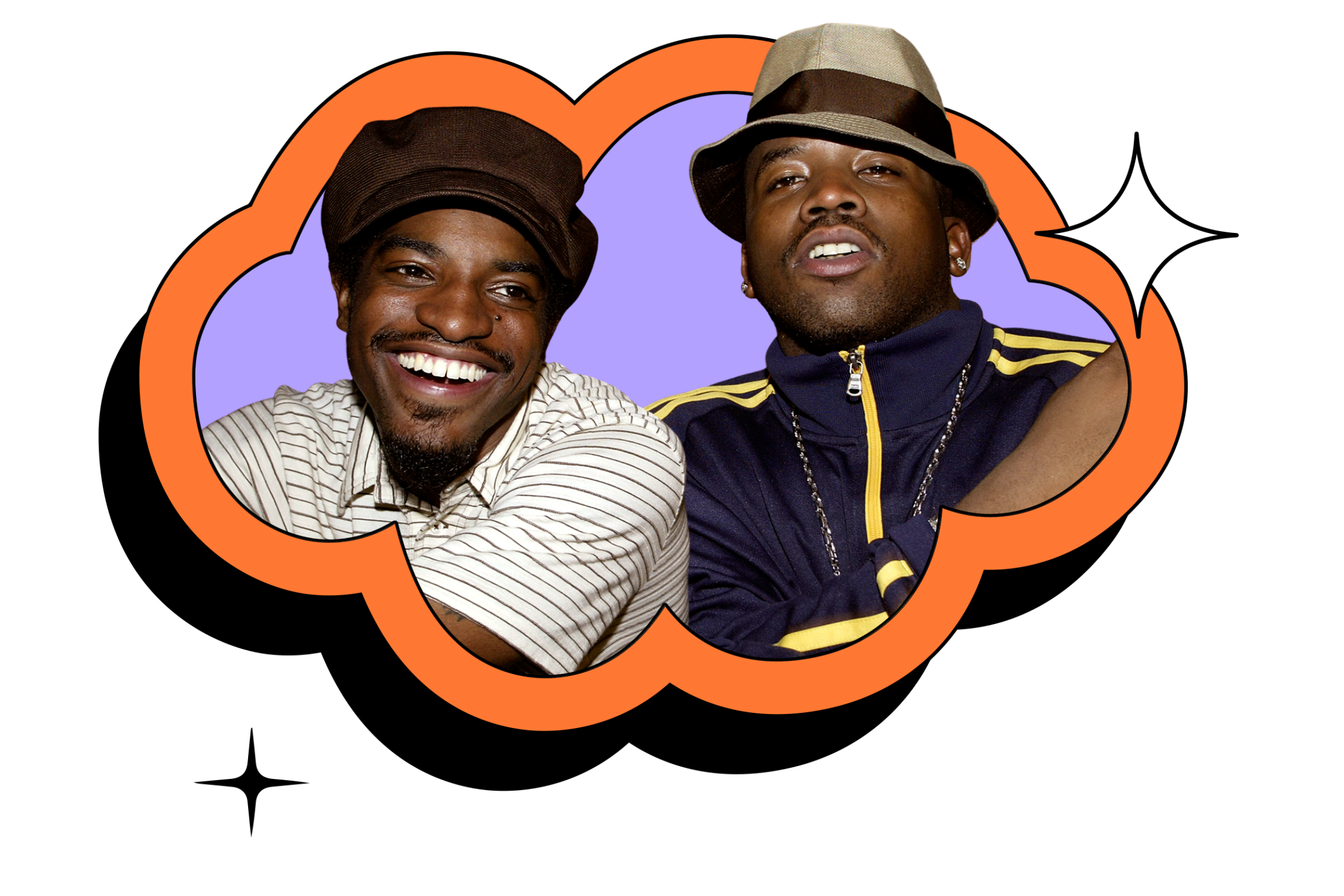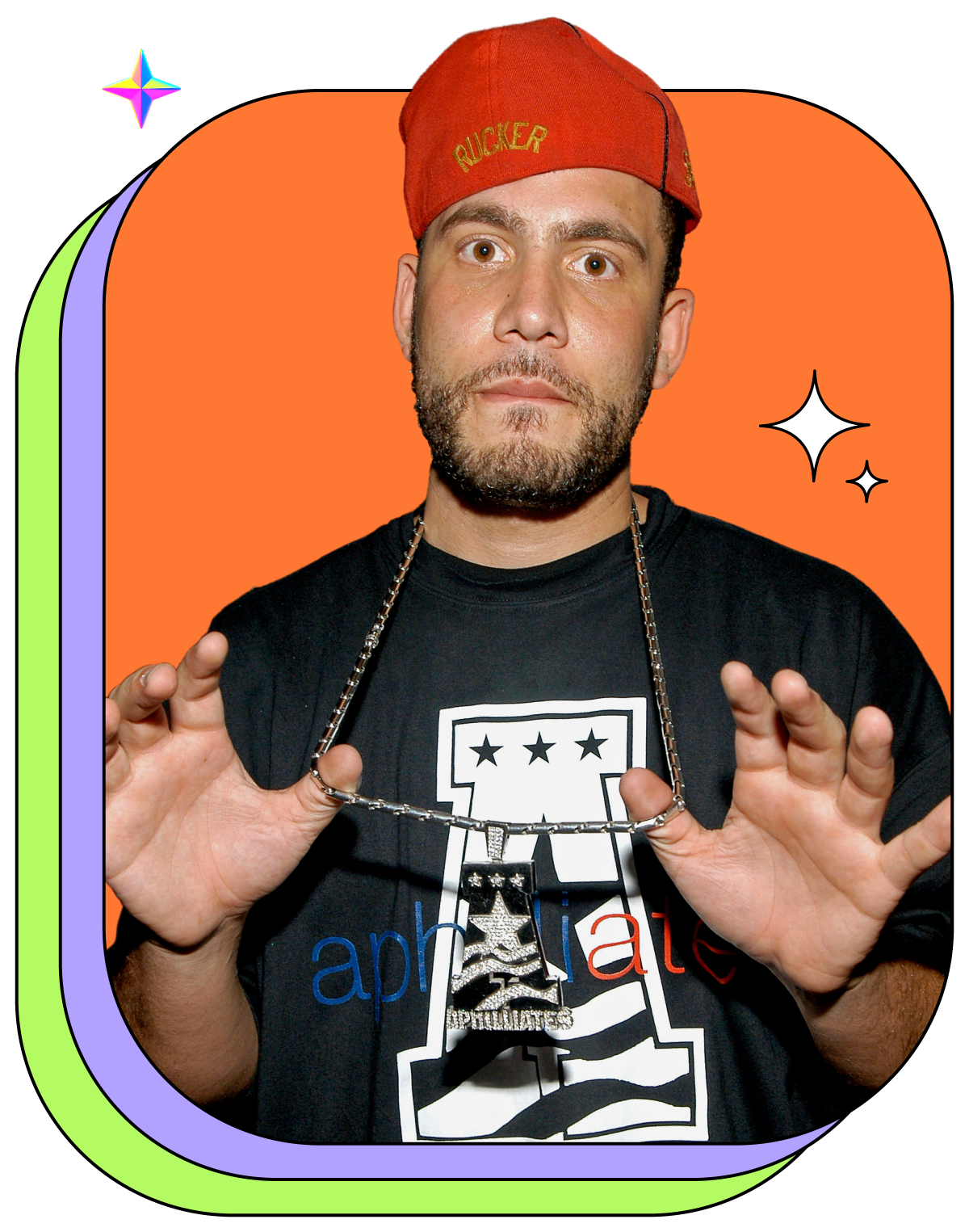The biggest entertainment stories
Get our big stories about Hollywood, film, television, music, arts, culture and more right in your inbox as soon as they publish.
You may occasionally receive promotional content from the Los Angeles Times.

In 1995, Outkast’s André 3000 and Big Boi walked onstage at the second Source Awards at New York City’s Paramount Theater, where the Atlanta duo had just been awarded best new group of the year by the influential rap magazine. The crowd, composed mostly of New York and L.A. rap cognoscenti who had invented or dominated the genre, jeered, nearly heckling Outkast offstage — but not before André reeled off a prophesy.
“It’s like this, though, I’m tired of them closed-minded folks,” André said. “It’s like we got a demo tape and don’t nobody wanna hear it. But it’s like this, the South got somethin’ to say.”
Eight years later, in 2003, the duo’s hometown was inarguably the center of the world for hip-hop.
That year, Outkast released its sprawling double album “Speakerboxxx/The Love Below,” which would go on to sell more than 10 million copies and spawn two Hot 100 No. 1 singles. Incredibly, it remains the last hip-hop album to win album of the year at the Grammys, the capstone of a triumphant year for Atlanta hip-hop.

“It was electrified,” Big Boi, 48, says today of the mood in Atlanta in 2003. The Outkast veteran spoke with The Times from outside his band’s Stankonia studios in May (Outkast hasn’t released new music since 2006, though the pair headlined Coachella in 2014) to reflect on that era-defining shift south. “The confidence level was at a thousand. When you hit it, you don’t really realize because it’s so fast-paced. We were around the globe, moving from here to Europe to Australia, Japan. But by the time we came back home, it was on fire.”
“2003 was the turning point,” Atlanta mixtape king DJ Drama, 45, said in a phone interview. The Generation Now label boss (home to Lil Uzi Vert and Jack Harlow via Atlantic Records) remembered that delirious year of possibility. “Atlanta was making its mark as the third coast. The city was it, you could feel it.”
Atlanta’s rap scene had been flowering for decades. With the post-civil rights era reverse of the Great Migration, when Black people began returning to Southern cities like Atlanta in the ’70s, the region boomed with fresh energy.
A growing record industry, anchored by labels like Babyface and L.A. Reid’s LaFace and Jermaine Dupri’s So So Def, took root in the ’90s to elevate local rap and R&B talent to national renown. Black strip clubs like Magic City became de facto A&R research hubs for major labels. Production groups like Organized Noize and the Dungeon Family artist crew (composed of acts like Goodie Mob, Outkast, Future and Killer Mike, among others) made genre-demolishing collaborations. By the early 2000s, the momentum was obvious.

“At this time, the movie industry was moving here, so it was cracking,” Big Boi said. “We were in our own bubble, we had chemistry and camaraderie. We wanted to be the best at what we were doing, and we wanted to break down the notion of ‘You only can do this type of hip-hop.’ We blew all that s— away.”
Young artists and producers like DJ Drama felt the ramp-up too in local labels like Noontime, venues like Club Kaya and DJs and promoters like Nabs and Alex Gidewon.
“It seemed like most album release parties took place in Atlanta. When an album dropped on a Tuesday, you’d see Jay-Z signing albums at our campus record store,” DJ Drama said. “There was so much energy in the city and behind the scenes. We had all the writers, producers, studios, all the key parts of the chessboard.”
In 2003, Atlanta declared checkmate.
Outkast met at Fulton County’s Tri-Cities High in the early ’90s, where André’s Prince-inspired bohemianism complemented Big Boi’s more formalist but ambitious rapping. After a trio of beloved albums — 1994’s “Southernplayalisticadillacmuzik,“ 1996’s “ATLiens” and 1998’s “Aquemini” — 2000’s “Stankonia” went five times platinum on the strength of singles like the drum-and-bass-driven “B.O.B.” and the funk croons of “Ms. Jackson” and “So Fresh, So Clean.”
“Speakerboxxx/TheLove Below,” however, was a full-blown cross-cultural and commercial phenomenon. It was the fifth-bestselling album of 2003 and would soon become the toast of the Grammys in 2004 (winning for rap album). “Hey Ya!,” André’s retro-rock single, was a No. 1 hit, as was Big Boi’s suave and sultry “The Way You Move.”
In 1983, KDAY-AM became the first radio station to play wall-to-wall rap music, thanks to an ambitious new music director and some soon-to-be famous DJs.
“It was great, man, we’ve been on cloud nine ever since and never came down,” Big Boi said of that year. “We weren’t taking no prisoners. We were relentless. We knew that we wasn’t gonna stop.”
A new capital of rap had ascended, and every strip-club DJ, home-studio engineer and mixtape hawker in the city knew it. Acts like Bone Crusher and Lil Jon ran the city’s brash crunk sound up the pop charts, hitting No. 26 and No. 2 with “Never Scared” and “Get Low,” respectively. A young local named T.I. had just coined a new genre of trap music, forged in the city’s dead-end drug houses. Ludacris’ hook-savvy rap topped the Billboard 200 with “Chicken-n-Beer,” and Young Jeezy, Killer Mike and Gucci Mane were winding up for huge breakthroughs.
In February, the NBA All-Star Game rolled through town for the most debauched party week of the young millennium. That year, DJ Drama, a recent Clark University graduate, inaugurated his Gangsta Grillz mixtape series. With his ear for rising talent, Drama became the most important tastemaker in hip-hop. Mixtapes from T.I., Young Jeezy and Lil Wayne soon kicked off new careers and fresh renaissances.

“Gangsta Grillz was not only the hottest thing in Atlanta, it was the hottest thing in L.A., Detroit, Philly,” Drama said. “It catapulted Southern hip-hop to an international level. You couldn’t go anywhere without hearing ‘Trap or Die’ or ‘Dedication.’ My phone didn’t stop ringing.”
Meanwhile, a generation of Atlanta teenagers came of age knowing what was possible for artists in the city. By 2013, acts like Future, Migos, Childish Gambino and Young Thug were fulfilling the dream of Outkast’s “ATLiens,” with no limits on sound, style or commercial potential. Trap music, once a local phenomenon of eerie synths and clattering digital snares, became the default sound for much pop music to come.
Local labels like Quality Control built the next class of the city’s infrastructure, and Donald Glover’s “Atlanta” series on FX gave its rap scene a surrealist, meditative treatment. L.A.’s Tyler, the Creator paid fealty to Drama on his Grammy-winning “Call Me if You Get Lost,” which he made with Drama in homage to the early 2000s Atlanta mixtapes he grew up on.
“There was a time in ’03 when I almost gave up and moved back to Philly because I could barely pay the light bill,” Drama said. “Imagine how many classics would never have been made.”
Before he was on ‘Law and Order: SVU,’ Ice-T broke down doors for aspiring rapper-actors when he starred in 1991’s “New Jack City.”
In Atlanta, there’s a semi-serious movement to amend the Confederate memorial at nearby Stone Mountain to add carvings of Outkast in their trademark Cadillac. Big Boi laughed at the prospect of it ever coming true but said that if Atlanta wanted more years like 2003, its artists should relentlessly look forward.
“Don’t re-create the past,” Big Boi said. “We all saw that anything was possible. It’s all eyes on Atlanta. So upgrade the music, make your mark, go outside your comfort zone. It’s more exciting that way than to try to re-create something that’s already been done.”
The biggest entertainment stories
Get our big stories about Hollywood, film, television, music, arts, culture and more right in your inbox as soon as they publish.
You may occasionally receive promotional content from the Los Angeles Times.